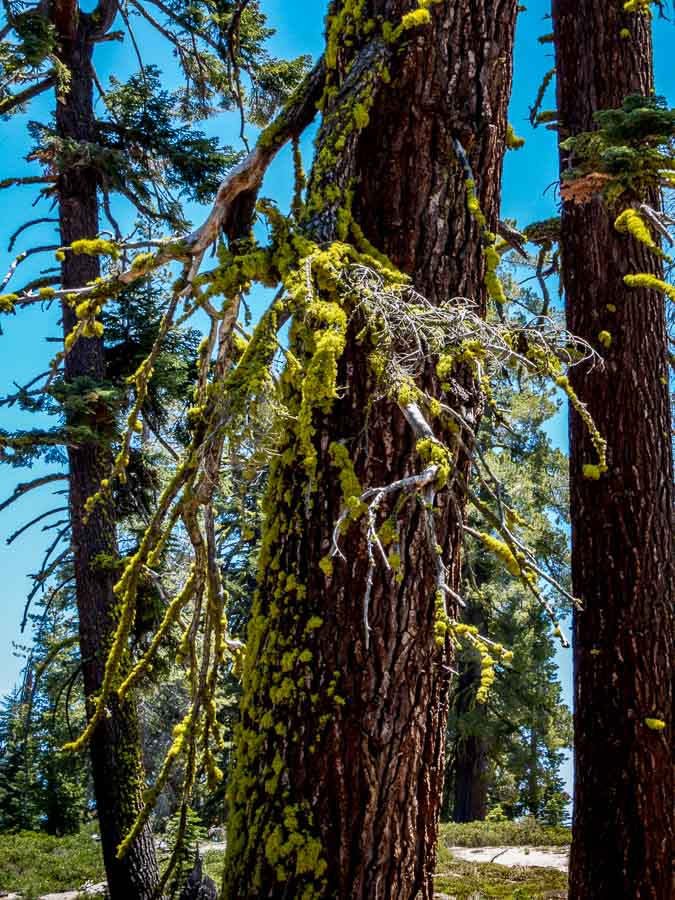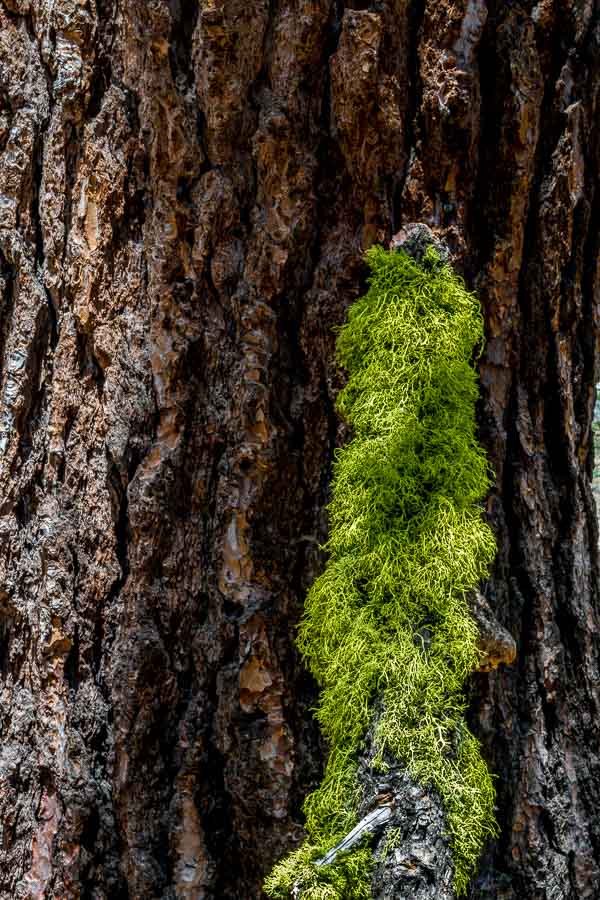Generally I put the main description of the blog post under the picture, but this day is a bit different because I am actually offering three photographs.
Whenever I hike, I enjoy finding nature’s surprises. I am always excited to find a new fungus or a natural design created by erosion, veins in rocks, etc.
While hiking the Taft Point Trail, I came across an abundance of light green lichen clinging to several trees. Many of the trees were in various stages of stress or near death.
The pictures below show this lichen in its beauty. The texture and color are very striking especially when seen against the reddish bark of the trees. As the links below note, this wolf lichen can be poisonous to mammals.
The pictures below reveal how I discovered this phenomenon. It begins with a far off photo, moving closer in each successive picture. I hope you find it as interesting as I did!



What is a lichen?
“To a biologist, the answer is simple: a moss is a plant and a lichen is a partnership between a fungus and algae or cyanobacteria (formerly known as blue-green algae). But that may not help you, since you won’t see the algae or cyanobacteria with your naked eye.
So here is a general rule of thumb: Mosses are often grass green and lichens are every other shade of green, or brown, grey, orange, yellow; you get the idea.”
“Letharia vulpina, commonly known as the wolf lichen (although the species name vulpina, from vulpine relates to the fox), is a fruticose lichenized species of fungus in the family Parmeliaceae. It is bright yellow-green, shrubby and highly branched, and grows on the bark of living and dead conifers in parts of western and continental Europe, the Pacific Northwest and northern Rocky Mountains of Western North America. This species is somewhat toxic to mammals due to the yellow pigment vulpinic acid, and has been used historically as a poison for wolves and foxes. It has also been used traditionally by many native North American ethnic groups as a pigment source for dyes and paints.”
Do you have a question about our visit to Yosemite? Ask it in the comment section.
*All photographs Copyright by Jeffrey B. Ross with all rights reserved.
See previous Year of Yosemite (YOY) posts HERE. If you want to read the introduction to the YOY series, CLICK HERE.
***********************************
Meta Data – None for this series of photographs